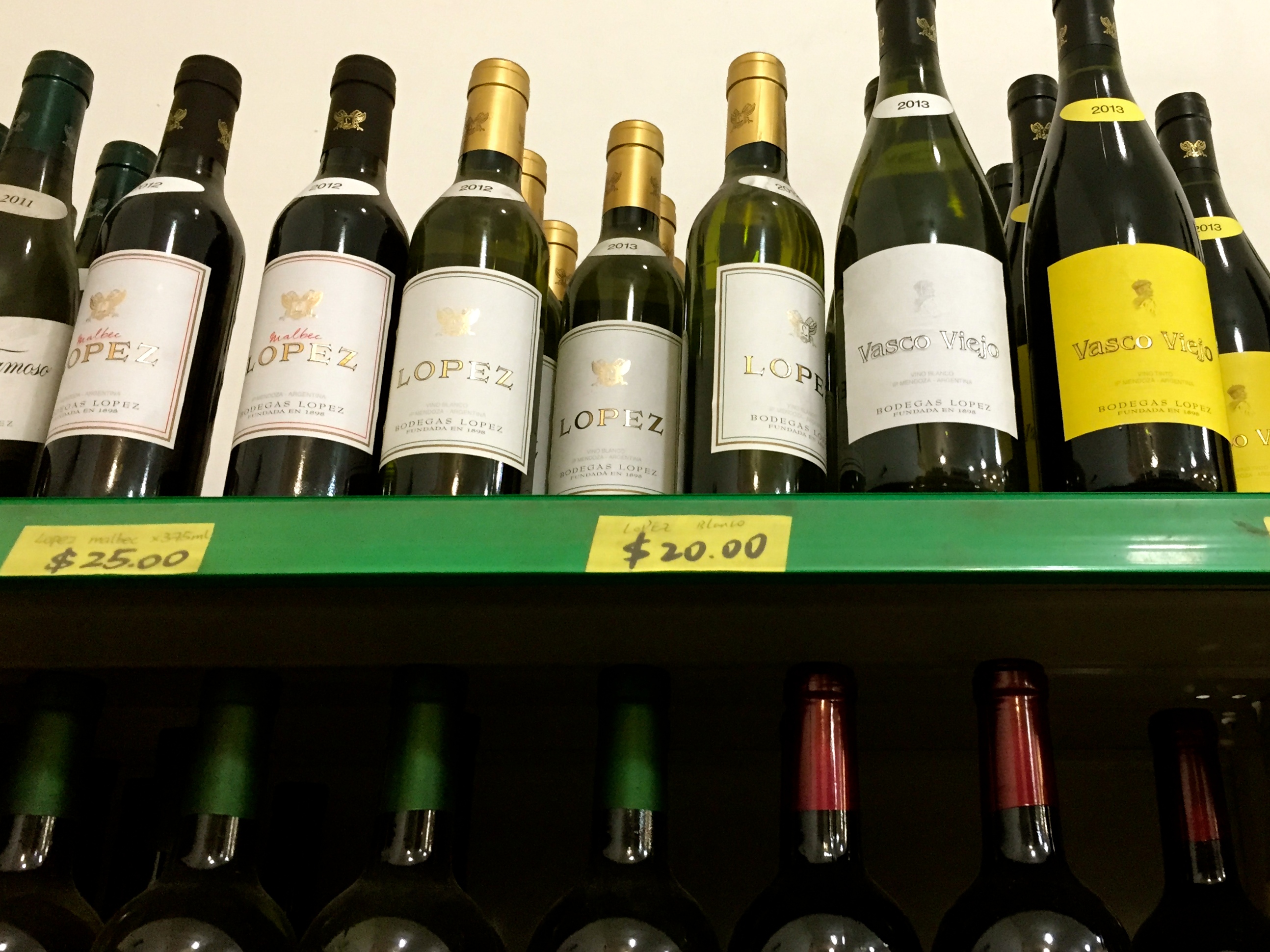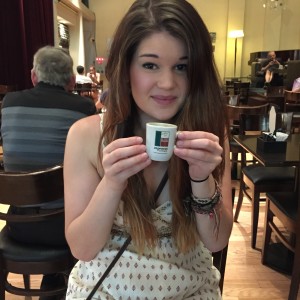- Why is everybody walking so slowly?
There is something to be said about the relaxed pace of life in South America. Nobody is really ever in a rush to get anywhere, and it is a really big culture shock for most Americans who are used to the hustle and bustle of our culture. We are always thinking about the next event or project or commitment, and in South America the focus is more on enjoying the moment. That is not to say, however, that Buenos is a slow-moving city. It is a huge, vibrant city where things are always happening—porteños just take the time to enjoy them more.
- Beer comes in LITERS here?
Yes, yes it does. And it is damn cheap, too. At 20 pesos a bottle, it is a deal that anyone looking to down a cold one just can’t pass up. You can purchase smaller bottles too, but its more cost effective to go big; and the idea is that you share amongst friends rather than nurse your own bottle. And the best part? There are no open container laws in Buenos Aires, so you are free to walk around the city with bottle in hand (although you may get some funny looks from locals.)
And beer isn't the only thing that's cheap: be sure to try the 20 peso Argentine wine. In this country, expensive doesn't always mean better.

- And I’m expected to stay out partying until the sun rises?!
Not necessarily, but if you don’t want to seem like a loser, you’d better get used to the lifestyle. Most bars will not open until midnight or 1 a.m., and nobody shows up until 2 or 3 a.m. The party literally goes on all night—after dancing at boliche after boliche, you’ll ride the bus home next to businessmen and women on their ways to work, and no one will bat you a second glance for your beer-stained shirt, messed-up hair, and questionable sobriety.
- Don’t pretend your dog didn’t just defecate on the sidewalk. Please pick that up.
This is a thing, and it’s disgusting. Buenos Aires is a concrete jungle, and most people don’t have direct access to parks or green space. However, people still love to have dogs, which they walk daily and allow them to “do their business” wherever they happen to do so. Dogs will urinate and defecate on the sidewalks, and most of the time won’t clean up afterwards. Countless times I have shot judgmental glares at people who walk away after their dog finished taking care of business. Most of the time they don’t care.
- I know I shouldn’t eat street food, but this looks too good to be unsafe.
“Choooooooripan!” you will hear shouting across the stalls of the San Telmo market and countless other places throughout the city. Whether it is these delicious chorizo sausages topped with and incredible salsa or the amazing, fresh rice-crispy like chocolate morsels that are packed in a cylindrical plastic bag and cost only 8 pesos, you are sure to never be disappointed with Buenos Aires street food. And honestly, it is probably one of the safest places to eat on the street in all of South America. I’ve had a lot of food poisoning (TMI?), but none of it came from here.
- Exactly how big is this city? I thought I saw everything!
No, you never will. Buenos Aires is a city of over 13 million people, and although you may be able to visit all the touristy neighborhoods in a span of several days, you will never see the incredible variety that the city has to offer. During my time in Buenos Aires, I lived in a working class neighborhood on the edge of la Recoleta, so I got a taste of both worlds. I saw the beautiful, Parisian buildings that Buenos Aires is so famous for as the “Paris of the South,” and I got to see the day-to-day life of the average working in the city. It was a fascinating contrast, and since there were no good coffee shops or bars in my area, I was pushed to explore other parts of the city but was also able to appreciate my own.
- Why is there an Empire State Building replica in the middle of a 14-lane road?
This is the Obeslico, and it is an icon of modernity for Buenos Aires, and the similarity is merely coincidence. The street is called 9 de Julio, named for Argentina’s independence day, and is the world’s widest road. This road is basically necessary to get from one side of Buenos Aires to the other, and if you can survive your first taxi ride on it, you’ll be set. There are stereotypes about drivers in New York, LA, and D.C., but those will never match the caliber of danger with which the porteño drives. At least you will have a nice view if you can catch a glimpse of the obeslisco before it passes by your cab window.
- This mini-coffee sure isn’t going to fulfill my caffeine needs for the day. Better drink 4.
Coffee in Buenos Aires does not come in latte form; in fact, one clear giveaway for Americans in the city is to order a venti of anything from Starbucks (yes, there are lots of those around the city). Instead, porteños drink cortadas, or small cups of coffee that look little but can really pack a punch on the caffeine scale. Every café in the city will offer these on their menu, and they will come with small cakes or cookies on the side for your taste pallet. My favorite? The chain coffee restaurant Havana, named for the Cuban capital of course. However, coffee isn’t really my thing these days, and I much preferred their strawberry iced frappes on a hot February day.

- The Malvinas? You mean the Falklands?
The Argentines are still salty about their 1980s war with the British, and there are many a porteño that will curse the name of Margaret Thatcher and damn the Brits to hell. The Falkland Islands, or as the Argentines refer to them, Las Islas Malvinas, were a British colony/territory when Argentina decided to invade in the 1980s. Thatcher immediately sent warships to stop the invasion, and an alarming number of people were killed on both sides of the conflict. To this day, Argentines observe a memorial day, el Dia de las Malvinas, to commemorate the soldiers involved and the political and social problems still remaining from this historical event.
- I speak Spanish, but why can’t I understand what anybody is saying?
That’s because Argentine castellano is unlike any dialect you’ve ever heard. It has heavy influences from Italian, which was a major source of immigrants in the 19th and 20th centuries, and is very characteristically different from any Spanish you will hear in other parts of South America. The “yah” sound made by the double L’s, like in llama, becomes a “jah,” and the furry creature goes from being called a “yama” to a “jama.” There are also a number of slang words, called “lunfardismos,” that are sure to confused an unaccustomed Spanish speaker. Fear not though, after some time spent in the city you will begin to pick up this new foreign language, and you will start sounding like a sophisticated porteño in no time.
This post can also be found on USA TODAY College.
